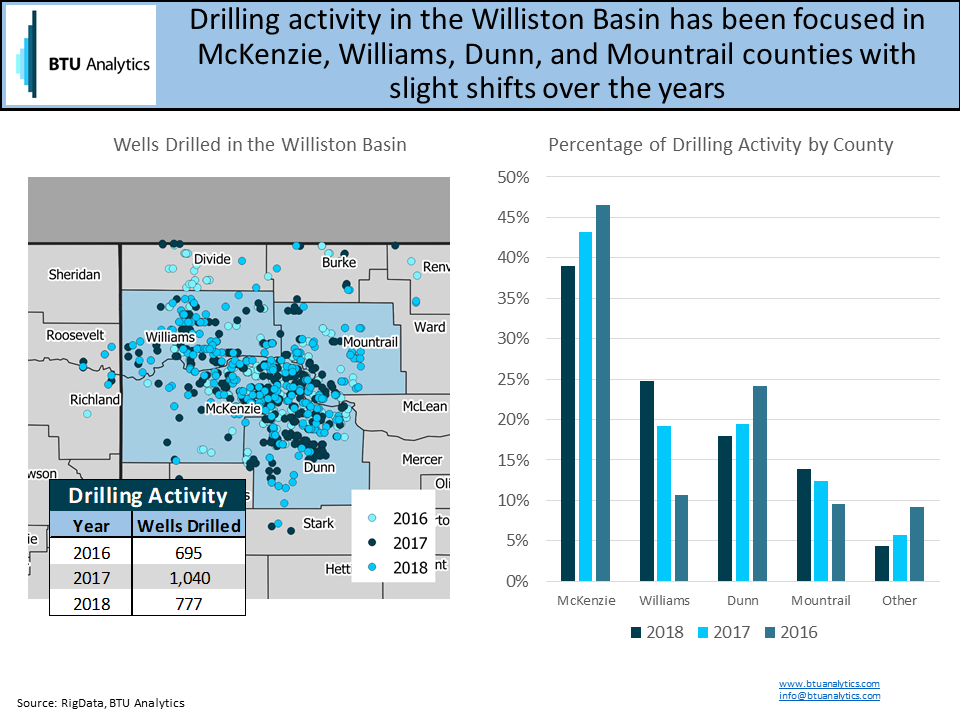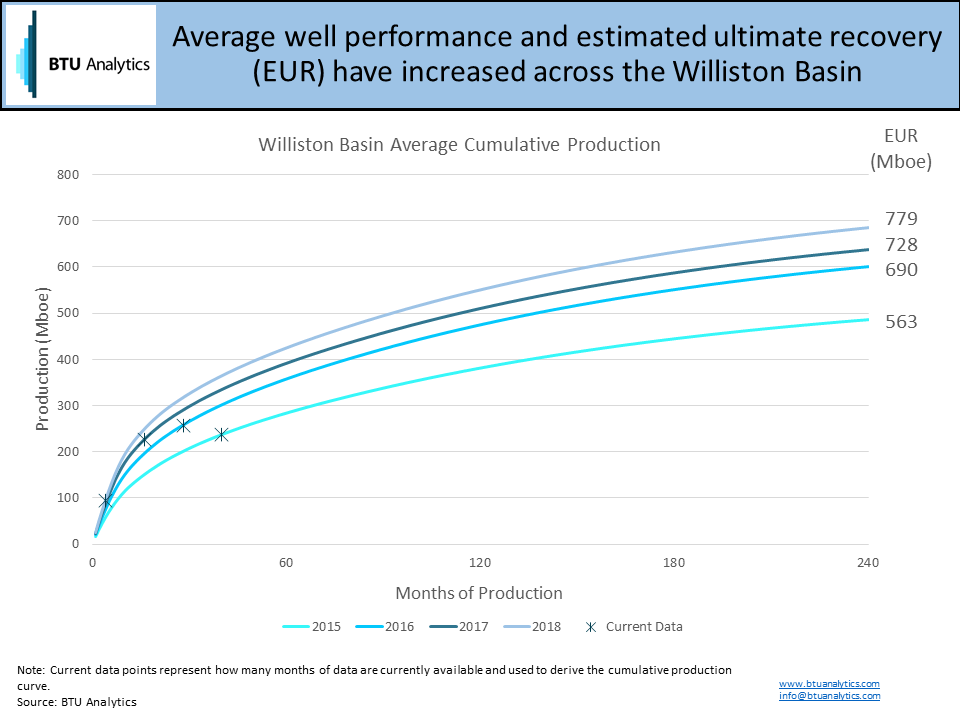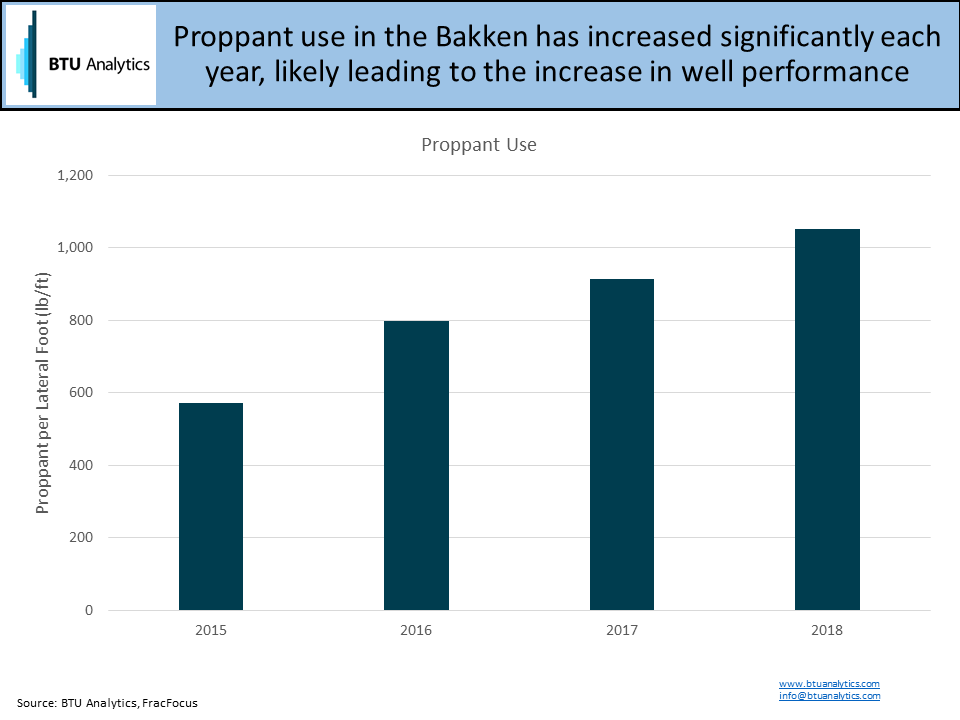With the recent growth and excitement around regions like the PRB and Permian, many people have written off the Bakken as an established play with limited growth. However, it might not be time to write off the Bakken just yet. In the company’s second quarter earnings, Continental Resources adjusted their Bakken type curves and increased their estimated ultimate recovery (EUR) to 1,200 Mboe from 980 Mboe one year ago in 2Q17 and 800 Mboe in 2015. They also note that “the rocks did not change.” Today’s energy market commentary will take a look at Bakken’s productivity across the Williston Basin to see if production in the basin as a whole is showing improvements similar to those Continental is touting.
As Continental noted in their earnings presentation, the rock did not change, and producers have been drilling in the same areas in the Williston Basin for several years, which is illustrated below. Since 2015, drilling activity has been increasingly focused in four counties: McKenzie, Williams, Dunn, and Mountrail. While the distribution of activity in these counties has shifted slightly over the years, operators are overwhelmingly still drilling in the same places.

So, producers across the basin have been focusing on the same rock. Have they seen improvements in well performance and EUR like Continental has? The graph below shows that, on average, they have. The average EUR has increased from 690 Mboe in 2016 to 779 Mboe in 2018, almost 100 Mboe. It is important to note that these cumulative production curves and EURs are derived from data that is currently available. There are risks in using early production data to estimate production for the life of the well.

Improvements in well results across most shale plays have generally come from improved drilling and completion technology. Increasing lateral lengths and more proppant have been common strategies to improve well results. However, in the Bakken, two mile laterals have been the norm for years. But proppant use has been on the rise, growing from 572 pounds of proppant per lateral foot in 2015 to 1,051 pounds of proppant per lateral foot so far in 2018.

So, why do improving well results in the Bakken matter? Many industry watchers have discounted the future of the Bakken, believing the Permian to be the driver of oil growth in the United States over the coming years. But to the extent drilling activity or productivity surprises occur in the Bakken, or any other established play, those extra barrels have the potential to tip an otherwise balanced outlook. As the Permian faces takeaway constraints, could the Bakken have an opportunity for growth? Could that growth come from improved well performance instead of increased drilling activity in the region?
For more information on BTU Analytics’ view of production in the Williston Basin and across the US, request a sample of our US Upstream Outlook.









